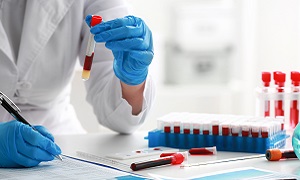Best Doctors in India for Endovascular Aneurysm Repair (EVAR) Treatment
Best Hospitals in India for Endovascular Aneurysm Repair (EVAR) Treatment
- City: Bengaluru, India
Hospital Highlights:
- Fortis Hospital Bannerghatta, Bengaluru was established in 2006.
- The hospital is a 276 bedded multi-specialty tertiary care facility.
- The hospital specializes in cutting-edge medical technology and dedicated patient care services.
- The hospital is equipped with state-of-the-art technologies like trans-radial angioplasty, trans-abdominal cardiac surgery, and computerized TKR navigation surgery.
- The hospital provides specialty medical services in cardiology, cardiac surgery, orthopedics, neurology, neuro-surgery, GI, and Minimal Access Surgery (MAS).
- City: Chennai, India
Hospital Highlights:
- Fortis Malar was established in 1992 and was formerly known as Malar Hospital.
- The hospital specializes in cutting-edge medical technology and dedicated patient care services.
- The hospital is multi-specialty, tertiary care facility with 180 beds.
- The hospital offers comprehensive medical care in specialties such as cardiology, cardio-thoracic surgery, neurology, neurosurgery, orthopedics, nephrology, gynecology, gastroenterology, urology, pediatrics, and diabetes.
- City: New Delhi, India
Hospital Highlights:
- Established in 1996, Pushpawati Singhania Research Institute is one of the top hospitals in the NCR region, as well as one of the top facilities in India for gastroenterology. The hospital is one of South Asia’s first institutes in medical and surgical treatment for diseases related to digestion.
- The hospital is equipped with state-of-the art facilities coupled with the latest equipment as well as renowned consultants from various parts of India as well as other parts of the world.
- City: New Delhi, India
Hospital Highlights:
- State-of-the-art technology and devoted healthcare professionals have been brought together under one roof at Venkateshwar Hospital to provide genuine medical care. The hospital’s professionals work together as a team to deliver the best possible treatment to their patients, using the most sophisticated equipment and information technology.
- Venkateshwar Hospital’s mission is to attain global excellence in healthcare by employing evidence-based, ethical clinical practices and cutting-edge technology by a team of highly skilled experts.
- City: New Delhi, India
Hospital Highlights:
- Sir Ganga Ram Hospital, New Delhi is known to provide the latest medical procedures with the latest technology in all of its units.
- The hospital has a team of reputed doctors, nurses, and healthcare professionals that ensure that patients receive quality care at affordable costs.
- Staffed with a team of highly qualified doctors, dedicated nurses, and paramedical and non-medical staff, the hospital aims to lead in healthcare delivery, medical education, training, and research.
- As per the vision of the founder, the hospital also provides free treatment to the economically weaker sections of society.
- Sir Ganga Ram Hospital also provides training to young doctors under the Diplomate in National Board(DNB) program. The DNB program at the hospital was started in 1984 and it is known for currently running the maximum number of DNB specialties in the country. It also has the distinction of having the first bone bank in India.
- City: Kerala, India
Hospital Highlights:
- Established in 2019, Apollo Adlux Hospital is the first Apollo Hospital in Kerala and the 73rd hospital owned by Apollo Group in India. With the state’s most advanced, comprehensive healthcare infrastructure and cutting-edge technologies, Apollo Adlux Hospital stands as an example of medical excellence in Kerala.
- With over 34 multi-specialty departments, the hospital believes in providing the best quality treatment to its patients at affordable rates, ensuring comfort at their difficult times.
- The 300-bed hospital is managed by a team of highly qualified and experienced experts who delivers exceptional hospitality to their patients and treats them with great compassion.
- With its affiliation with the Apollo Hospitals Group, the hospital aims in providing patients with top-notch healthcare services while also serving communities in Kerala.
- The hospital has good railway and road connections, and is conveniently close to Cochin International Airport.
- City: Gurugram, India
Hospital Highlights:
- Situated near DLF Cyber City, Gurugram, Narayana Superspecialty Hospital is one of the top medical facilities in the Delhi NCR region, catering to the needs of the people. Known for its commitment to quality medical care and patient service, the hospital is a state-of-the-art facility with planned and well-equipped sections, which includes a spacious OPD area as well as comfortable patient rooms.
- It is the closest super-specialty hospital from Indira Gandhi International Airport towards Gurugram, and also the nearest super specialty hospital from DLF Cyber City. It is also close to major residential areas in Gurugram.
- It is part of the renowned Narayana Health Group. Established in 2000, by Dr. Devi Shetty, a renowned cardiac surgeon, it has grown to be one fo India’s leading healthcare groups.
- City: Noida, India
Hospital Highlights:
- Fortis Hospital, Noida, stands as one of the oldest and most trusted healthcare institutions in the region, setting a benchmark for comprehensive medical care.
- As the second mega hub hospital in the Fortis Healthcare Group, Fortis Hospital, Noida, upholds a legacy of trust among more than 1.2 million patients. By integrating top-tier professionals with cutting-edge technology, the hospital delivers superior treatment across various medical disciplines.
- Specializing in advanced Neurosciences, Orthopedics, Kidney and Liver Transplant Programmes, Fortis Hospital, Noida has successfully performed over 1,500 transplants, solidifying its reputation as a leader in specialized medical interventions.
Endovascular Aneurysm Repair (EVAR)
Endovascular aneurysm repair or EVAR is a procedure for treating an aneurysm or abnormal enlargement of the abdominal aorta. When the abdominal aorta gets enlarged, there are generally two ways to perform surgery. It might be performed through an open incision or in a minimally-invasive procedure known as endovascular aneurysm repair.
This technique has an advantage, which is that there is no abdominal surgery. This makes this technique safer than the traditional open surgery and you also need to spend lesser time at a hospital.
Purpose
The largest artery in your body is the aorta. It helps to transport blood from your heart to various other body parts. When the aorta runs through the chest, it is known as thoracic aorta and when it reaches the abdomen, it is called as the abdominal aorta. This aorta helps supply blood to the lower parts of your body. The normal diameter of this aorta is around 1 inch or 2 cm. However, when it gets weakened or stretched, then it might expand or bulge. This condition is known as abdominal aortic aneurysm. When this aneurysm is over 5.5 cm, this increases the risk of a rupture and your doctor might consider a surgery.
Preparation
First your doctor will explain you how the procedure is done and you will have the opportunity to ask any questions that you might have. Your doctor might need to examine your medical history to ensure that you are in good health. You might also need to undergo blood tests as well as other diagnostic tests.
You will be asked to fast for a minimum of eight hours before your procedure, generally after midnight.
You should notify your doctor if you are pregnant, or if you think you might be. You should also let your doctor know about any medications that you are taking.
If you have a history of bleeding disorders, or if you are having anticoagulant medications, then it might be necessary for you to stop taking these medications. If you smoke, you will need to stop it as soon you can before the procedure. Smoking can interfere with your chances of having a successful recovery from the surgery and to improve your overall health status.
The areas of your surgical site might require shaving before the procedure.
Procedure
Procedures might vary depending on your condition, as well as on the skills and experience of your doctor.
First you will need to lie on your back on the procedure table. Then your heart rate will be continuously monitored. Once you are sedated with anesthesia, a breathing tube is likely to be inserted through your lungs. You will be connected to a ventilator, which will help you in breathing throughout the surgery.
Your surgeon will make an incision in each groin, to expose the femoral arteries. Using a method known as fluoroscopy, he will be inserting a needle into the femoral artery through which a guidewire is going to be passed and advanced to the aneurysm site.
Then he/she will inject contrast dye to visualize the position of the aneurysm and its adjacent blood vessels. After this, he/she will use special endovascular instruments and X-ray images for guidance. A stent-graft is then going to be inserted through the femoral artery, and will be advanced up into the aorta to the site of the aneurysm. It will be expanded and attached to the wall of the aorta.
An aortogram is going to be done to check for an endoleak, i.e. blood leaking out into the aneurysm sac of the stent graft. Once it is determined, that there is no leak, the instruments are going to be removed.
Then the incisions are going to be sutured back together, and the doctor will apply a bandage or a dressing.
Recovery
Depending on your condition, you may or may not be sent to the ICU. However, it is likely that you are going to be taken to a post-anesthesia care unit. You are going to be connected to monitors that will be constantly displaying your ECG tracing, blood pressure, breathing rate, your oxygen level as well as other pressure readings.
If you experience any pain, you will receive the appropriate medicines.
Slowly, you will be able to increase your daily activities gradually.
Once you are home, make sure that you keep the surgical site clean and dry. You will receive instructions from your doctor regarding this. If the sutures or surgical staples were not removed before you left the hospital, they will be removed during a follow-up office visit.
You should not drive unless your doctor tells you to.
If you experience fevers or chills, redness, swelling or bleeding at the incision site, or increase in pain around the incision site, then you need to notify your doctor soon.
Risks
There is a small risk that you might experience any of the following after the surgery:
- Heart attack
- Kidney failure
- Chest problem
- Stroke
- Loss of circulation in your legs or bowel
- Infection in the graft which was used to replace your aorta
A small percentage of men might also have difficulty in sustaining an erection after the surgery. If you experience you should inform your doctor, as there are treatments that are able to help.
Another recognized risk is deep vein thrombosis, which most patients can experience during the stay at the hospital. Your surgeon can recommend a treatment to prevent this.
It is best to discuss all risks and possible complications with your surgeon, before you undergo the surgery.











